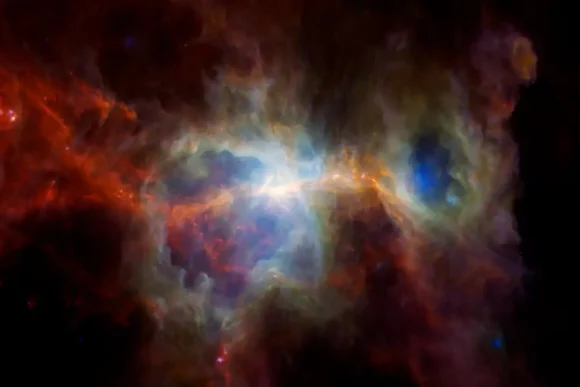Reading Under Alien Skies by Phil Plait for New Scientist, 7 June 2023
You may know him better as “the Bad Astronomer”, whose blog demolishes misconceptions and frauds about the cosmos. Now the tireless Phil Plait is taking us on a journey, to our satellite moon and beyond, past Mars and the Belt, past Saturn and Pluto, to other stars, to binaries and clusters, to nebulae and to the end of all things, as he sends us spiraling past the Schwartzchild radius of a black hole. Throughout (and with a few tiny exceptions), he and we see only what poor, bare forked humanity is equipped by nature to see. This is the cosmos as we would feel, hear and see it. Some measure of security and comfort is provided by spaceships and starships of ever-increasing unlikelihood but, deep down, we’re on our own out here, and trembling at the magnificence of it all.
This artful premise gives Plait licence to discuss what our real future in the solar system might look like, while at the same time exploring some startling stellar exotica. (Finally, I understand the Orion Nebula!)
In the final chapters, on star clusters, nebulae and black holes, our suspension of disbelief starts to come unstuck. This is partly to do with the fact that there’s nothing for us to smell, hear, walk on or trip over. (By contrast, Plait’s evocations of our own solar system are superbly sensual.)
Sooner or later we will be overwhelmed by a universe a lot bigger than we are. Here Plait describes our likely response as we witness the birth of stars:
“Your mind tries to comprehend what you’re seeing, churning out analogies rapid-fire — it’s like an explosion in a radioactive cotton candy factory, like being suspended in a frozen fireworks display, like flying through a million auroras — but in the end you fail. Humans never evolved to comprehend magnificence on a scale like this.”
Some of the grandest wonders in his arsenal are simply invisible to the naked eye. Just now and again, then, the valiant captain of our imaginary starship tweaks the viewscreens, showing us things we wouldn’t have seen by just leaning out the window; and on those rare occasions we may reasonably begin to wonder: what on eartyh are we doing out here? Why did we come all this way, just to watch a video? Couldn’t the same veritée have been achieved, sitting in front of a 5K screen in our pyjamas?
You could argue that Plait should have stuck to his guns, and even in the chapter on black holes, described only what human beings would see with their own eyes. But this is a game we abandoned centuries ago. Our machines have better access to the world than we do, and this has been true at least since Dutch lens grinders invented the telescope.
Much more telling, I think: virtually every wonder in this book is to do with scale. Bigger, brighter, heavier things dominate this account. But where are the stranger things? Is there anything in this account as abidingly weird as — oh, I don’t know — a tree? A house cat? A plate of fish and chips?
Earth beats the rest of the known cosmos hands down for complexity and change. And, yes, there may well be other biomes out there — but Plait can’t just invent them out of whole cloth. That would be fantasy, and this is a book rooted, however speculatively, in the known.
Plait is an able, resourceful and, on occasion, downright visionary guide to the far reaches of outer space. If this book leaves a few readers feeling very slightly disappointed, it’s not Plait who fell short; it’s the cosmos.
For 300 exhilarating pages, short-lived, fragile and under-equipped reader have relied upon imaginary technology to get them places they don’t belong. It is no bad thing if a few of them close this exhilarating book with a renewed feeling of reverence for their own world.

